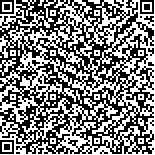|
| 预测BCLC A/B期肝细胞癌患者TACE联合局部射频消融治疗后复发的列线图构建 |
| Construction of A nomogram to predict recurrence after TACE combined with local radiofrequency ablation in patients with BCLC A/B stage hepatocellular carcinoma |
| 投稿时间:2025-02-12 修订日期:2025-05-07 |
| DOI: |
|
 |
| 中文关键词: 肝细胞癌 BCLC A/B 射频消融 经动脉化疗栓塞 复发 |
| 英文关键词:Hepatocellular carcinoma BCLC A/B Radiofrequency ablation Transcatheter arterial chemoembolization Recrudescence |
| 基金项目:重庆市医学科研创新基金项目(Y2023HLKYZDXM03) |
|
| 摘要点击次数: 26 |
| 全文下载次数: 0 |
| 中文摘要: |
| 目的 分析与BCLC A/B期肝细胞癌(HCC)患者经动脉化疗栓塞(TACE)联合局部射频消融(RFA)治疗后复发相关的临床变量,并建立列线图模型。方法 回顾性分析2019年5月至2024年5月在我院接受TACE联合局部消融治疗、Child-Pugh分级A级或B级、巴塞罗那临床肝癌(BCLC)分期为A期或B期的180例HCC患者的临床资料。根据7∶3的比例将患者随机分为训练集(n=126)和验证集(n=54)。记录患者的人口统计学、病史、血常规、肝功能、凝血检查、肿瘤特征以及无复发生存期(RFS)。结果 经LASSO及COX回归分析,确定γ -谷氨酰转肽酶与淋巴细胞比值(GLR)、白蛋白/球蛋白(AGR)、肿瘤数目、肿瘤大小均为影响HCC患者RFS的独立危险因素。通过GLR、AGR、肿瘤数目、肿瘤大小建立列线图模型,通过C-index分析显示,训练集及验证集列线图模型的C-index值分别为0.759(95% CI:0.697~0.822)、0.715(95% CI:0.663~0.794),能够较好地区分复发和非复发HCC患者,两个队列的1年、3年和5年RFS的受试者工作特征曲线下面积均>0.750。校准曲线也提示列线图在训练集及验证集实际生存概率和预测概率之间具有良好的预测准确性。决策曲线分析也显示,该列线图模型在训练集及验证集中具有较高的临床效用。结论 通过GLR、AGR、肿瘤数目、肿瘤大小建立的列线图模型显示了对HCC患者的良好区分、校准和临床效用,可提供1年、3年和5年RFS的个性化预测,及时识别高危HCC人群,有助于临床制定长期治疗和随访方案。 |
| 英文摘要: |
| Objective: To analyze the clinical variables associated with relapse in patients with stage A/B hepatocellular carcinoma (HCC) treated with transcatheter arterial chemoembolization (TACE) combined with local radiofrequency ablation (RFA), and establish a nomogram model. Methods: The clinical data of 180 HCC patients who received TACE combined with local ablation in our hospital from May 2019 to May 2024, Child-Pugh grade A or B, and Barcelona Clinic Liver Cancer (BCLC) stage A or B were retrospectively analyzed. Patients were randomly divided into a training set (n=126) and a validation set (n=54) according to a ratio of 7:3. Patients" demographics, medical history, blood routine, liver function, coagulation, tumor characteristics, and recurrence-free survival (RFS) were recorded. Results: By LASSO and COX regression analysis, γ-glutamyl transpeptidase-lymphocyte ratio (GLR), albumin/globulin (AGR), tumor number and tumor size were identified as independent risk factors for RFS in HCC patients. The nomogram model was established by GLR, AGR, tumor number and tumor size. The C-index values of the training set and validation set nomogram models were 0.759 (95%CI: 0.697~0.822) and 0.715 (95%CI: 0.663~0.794), respectively, which could well distinguish the patients with recurrence and non-recurrence HCC, and the area under the receiver characteristic curves of the subjects in the 1 -, 3 - and 5-year RFS of both cohorts were >0.750. The calibration curve also indicates that the nomogram has good prediction accuracy between the actual survival probability and the prediction probability of the training set and the validation set. Decision curve analysis also shows that the column-line model has high clinical effectiveness in training and validation sets. Conclusion: The nomogram model established by GLR, AGR, tumor number and tumor size shows good differentiation, calibration and clinical effectiveness for HCC patients, and can provide personalized prediction of 1-year, 3-year and 5-year RFS, timely identification of high-risk HCC populations, and contribute to the clinical formulation of long-term treatment and follow-up plans. |
|
在线阅读
查看/发表评论 下载PDF阅读器 |
|
|
|